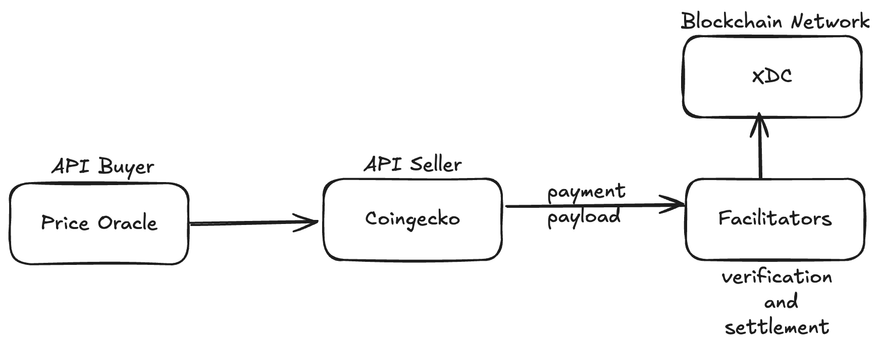Decoding x402 – The Missing Link in Micropayments
You find an insightful article on Medium or Substack. The catch? It’s behind a paywall. You decide to subscribe for that one article. A few months later, you discover you’ve been silently charged every month — for content you barely read.
Now flip the coin. As a content creator, you've probably noticed users abandoning your platform just because they don’t want to go through the hassle of creating accounts, adding cards, and managing subscriptions. The friction is real — and it kills micro-monetization opportunities.
This is where x402 steps in — a reimagination of the forgotten HTTP status code 402: "Payment Required". Originally reserved for digital payment systems, it was never standardized — until now.
What is x402?
x402 is an open standard for micropayments, purpose-built for APIs. It lets service providers charge per request using cryptocurrency, while remaining fully decentralized and non-custodial.
It bridges a long-missing gap in the web monetization stack — allowing developers to get paid without relying on intermediaries like Stripe or subscription platforms.
How it works:
- API Creator sets a price and preferred token (e.g. USDC) for an endpoint.
- API Consumer hits the endpoint → gets a 402 Payment Required response, with payment metadata.
- The consumer generates a pre-signed blockchain transaction fulfilling the payment request.
- This signed payload is returned to the provider.
- The API creator forwards it to a facilitator service, which verifies transaction validity and signature, broadcasts it to the blockchain, on confirmation, unlocks the actual API response.
A Real-World Example: The Oracle Problem
At Fathom Protocol, we operate a price oracle ingesting data from platforms like CoinGecko, CoinMarketCap, and CryptoCompare. Each of these:
- Requires subscription tiers
- Involves account setup and billing credentials
- Mandates secure handling of API keys
Now imagine a world where these providers support x402 micropayments:
- 💳 No subscriptions
- 🧾 No accounts
- 🔐 No API key management
- 💵 Pay-as-you-go in stablecoins
- 🔄 Stateless, trust-minimized integration
This reduces complexity, avoids vendor lock-in, and unlocks composability across DeFi and Web3.
x402 on XDC — Bringing It to Life
While x402 was originally implemented on Base (an L2 by Coinbase), its architecture is blockchain-agnostic.
Given XDC’s low fees, enterprise-grade reliability, and stablecoin ecosystem, we extended support for XDC Mainnet using USDC.e — the bridged version of USDC on XDC.
Repository:
🔗 Tarunshrma/xdc402 – XDC Integration Branch
⚠️ Note: This integration is experimental. It has not been audited and is not production-ready. Use at your own risk.
Limitations and Open Questions
While x402 is a promising standard, there are some challenges to consider:
🔍 Anonymity vs. Identity
- x402 is designed to preserve privacy — no email, no account, no login.
- But what if an API provider needs to perform KYC, restrict access by region, or enforce rate limits per user?
- Today, this is unsolved. Options include:
- Using wallet-based allowlists (e.g. only accept payments from known addresses).
- Issuing off-chain JWT tokens post-payment (non-standard, needs customization).
- Combining x402 with identity layers like Verifiable Credentials (VCs) or ENS profile checks.
🧾 No Refund or Dispute Mechanism
- Once the transaction is broadcast, there's no native refund flow.
- Malicious actors could impersonate APIs and steal payments — requiring API consumers to whitelist trusted providers.
🔁 Lack of Retry Semantics
- If a user accidentally underpays or times out mid-call, they must start the entire flow again — unlike subscription models that retry on failure.
🧱 Smart Contract Cost
- On high-fee chains like Ethereum Mainnet, transaction fees may dwarf the micropayment itself — making it impractical.
- XDC’s low gas fees solve this for us — one of the key reasons we chose it.
The Road Ahead
To accelerate x402 adoption:
- API creators should explore adding 402 fallback flows in their stack.
- Integrate Modular Account Abstraction for Advanced Access Rules
- Facilitators can evolve into gasless relayers or session managers.
- Protocols like Farcaster, Lens, or DID registries can offer opt-in identity layers for permissioned APIs.
As more applications in Web3 move toward modular monetization, x402 offers a powerful primitive — the “HTTP of blockchain-native payments.”
Final Thoughts
If you’re building APIs, running oracles, or serving Web3 infrastructure — x402 deserves your attention. Combined with XDC, it brings micropayments to production-grade ecosystems.
We’ll continue refining the implementation, and we invite contributors to explore, fork, and experiment with:
🔗 https://github.com/Tarunshrma/xdc402
📩 Feedback?
Let’s collaborate to make x402 a reliable standard — starting with XDC.
Feel free to open issues, propose integrations, or connect via GitHub.







Discussion (3)
Great post Tarun. A few things to consider beyond what you wrote. I do love the idea about allowlist for entreprise API's and some type of gated permissions that can be implemented via NFT's tied to the wallet making the payments. There could be some KYC implementation tied to the purchase of the NFT that can give access to the API services. We could also implement ENS or XDC Name services binding the identity to a readable alias that can be used for account recovery, rate limits, or tier enforcement.
For the no refund or dispute mechanism, maybe using a layered proxy contract so instead of paying the API directly, the enterprise or customer can send payments to the proxy smart contract which will hold the funds briefly. That gives time for the API to respond within a set time and if they dont respond, the funds are automatically return to sender.
Im sure the @plugin team will be interested in this for sure.
Great job Tarun,
That was quick! As a Layer 1 Network striving to be the ultimate platform for RWA, Trade Finance, and Payments, we must continuously push the boundaries of innovation to remain at the forefront of the blockchain industry.
Kudos to you and the XDC team!